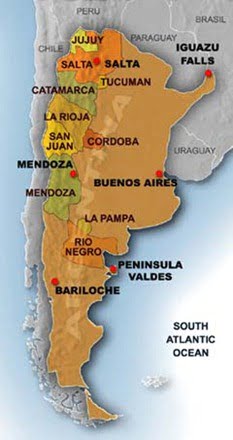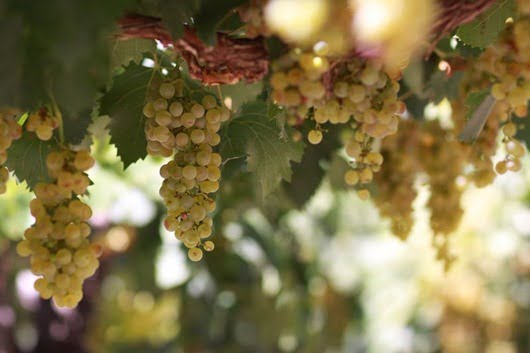Torrontes: The Little Grape That Could!
August 4, 2011The Story
Torrontes [Tohr-ron-tez] is quite easily the most widely planted white grape variety in Argentina with Chardonnay in a distant 2nd; and with the recent upsurge in sales over the past couple of years, it’s likely to stay that way for a while!
Most folks in the wine community are already on-board with the idea that Torrontes has the potential to become as popular in Argentina, as Pinot Grigio is in Italy.
It’s not that I can’t personally get behind that notion, because I certainly can; however it should be treated with a certain level of caution!
As popular as Pinot Grigio is, there are a handful of extremely well-made examples available, which in my opinion represent about 10% of the market. The other is 90% made of thin-watery-crap. “Dogs Nose” wine I call it! Wet and cold, with those being the only redeeming qualities!
(You’re welcome to steal that term, and call it your own!)
Italian winemakers saw $ signs with the popularity of Pinot Grigio in overseas markets, and they got lazy. Pumping out garbage, knowing full-well that is they slap Pinot Grigio on the label, there’s already a fairly decent chance it will sell. The same thing is already starting to happen with Torrontes; so buy with caution!
Torrontes isn’t a brand new grape, Argentinean winemakers have been growing it for years, but kept most of the juice to themselves. For the most part, grape yields were always high, and the quality was sub-par. Something had to change if the wines were ever going to succeed outside of Argentina!
Over the past few years, a new wave of younger Argentinean winemakers have greatly improved the quality of Torrontés by seeking lower, more concentrated yields in the vineyard. Because Torrontés can sometimes taste bitter or unripe, viticulturists pick blocks of grapes (at different levels of ripeness), and blend together to balance the wine’s flavor profile.
Wines produced from Torrontes are normally 100% of the grape, however some producers are experimenting by blending it with Chardonnay. Like other aromatic whites, Torrontés is best fermented at cool temperatures, and then aged in a neutral container, such as stainless steel or old oak barrels (so they don’t impart as much flavor), to preserve its fragrance and crisp acidity.
Needless to say; if you’re someone looking for a crisp, refreshing and aromatic white wine at a reasonable price: Torrontes is right up your alley.
On the subject of price, $10-$15 is about the average price for a bottle of Torrontes, anything pushing toward $20 (retail) would be defintely considered a premium!
 Place
Place
No-one really knows how and exactly when Torrontes arrived in Argentina; but it seems to have been there a long time! The main theory is that it was brought over by Spanish colonists, quite possibly missionaries, with this same story holding true for the majority of grapes growing in South America.
One of the only other places in the world you’ll find Torrontés is in small amounts around Córdoba in the southern Spanish community of Andalucía. This leads even more credibility to the notion that the grape was originally a Spanish export.
It’s worth noting that, although there’s a grape known as Torrontés in the Canary Islands, it’s not the same as Argentinean Torrontes.
Like its red counterpart Malbec, Torrontes thrives in Argentina’s unique terroir, and has yet to find a suitable climate elsewhere.
There are two main regions of production for Torrontes. Salta (see map) in the North, and the warmer Mendoza region, 600 miles to the south.
Salta has some of the highest vineyards at between 5,000-6,000 ft. above sea level. Due to its cooler climate, and even cooler nights, Torrontes wines produced in Salta are usually more crisp and high in acid. Torrontes produced in Mendoza is more aromatic, intense, and generally “bigger”.
Argentina has an extremely low rainfall, so the vines rely on a complex trench canal irrigation system to collect water from the snow melting on the Andes Mountains. The problem is, what if you own a vineyard without access to one of these canals? What do you do for water? You can’t exactly just turn on your sprinkler system!
I‘ve heard from more than one source, that if you’re a winemaker in Mendoza, and own a vineyard without irrigation, you better get friendly with your neighbors! For the most part, this means crossing their palms with silver if they’re going to let you divert one of their precious water canals your way! The problem gets more complex when you consider that most irrigation canals run through several vineyards. Needless to say, the guy who owns the land at the top of the mountain where the source of the water starts, isn’t too short on cash!
The Taste
As previously mentioned, Torrontes is one of the more aromatic white grapes, showing a fragrance of flowers, lychee, tropical fruits, peach, orange peel, spice, apricot and peach. The grape is often likened to Gewürztraminer for its intense aromatic flavors and aromas. Clean and crisp, with good fresh acidity, making them ideal food wines.
Torrontés pairs best with foods such as shrimp, white fish, spicy food and Asian, Thai or Mexican dishes; promising not to overpower, based on their normally quite restrained alcohol levels.












